4 Visualization Exercises for Guided Meditation invites you into a realm where the power of the mind intertwines with relaxation and tranquility. Let’s delve into a world where mindfulness meets visualization to unlock inner peace.
Visualization exercises are a potent tool in guided meditation, offering a unique approach to relaxation and stress relief through the art of mental imagery and focus.
Introduction to Visualization Exercises
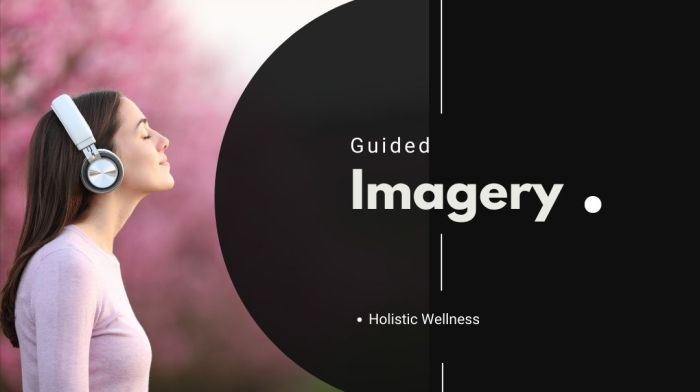
In the realm of guided meditation, visualization exercises play a crucial role in helping individuals achieve a deeper state of relaxation and mindfulness. These exercises involve creating vivid mental images to stimulate the senses and promote a sense of calmness and focus.
By incorporating visualization techniques into meditation practice, individuals can enhance their ability to concentrate, reduce stress levels, and improve overall mental well-being. Visualization exercises offer a unique way to tap into the power of the mind and leverage the connection between thoughts and emotions.
Benefits of Visualization Techniques
- Enhanced relaxation: Visualization exercises help calm the mind and body, allowing for a deeper sense of relaxation and tranquility.
- Improved focus: By visualizing specific scenes or scenarios, individuals can sharpen their focus and attention, leading to increased mental clarity.
- Stress relief: Engaging in visualization exercises can reduce stress and anxiety levels, promoting a sense of inner peace and emotional balance.
Body Scan Visualization Exercise
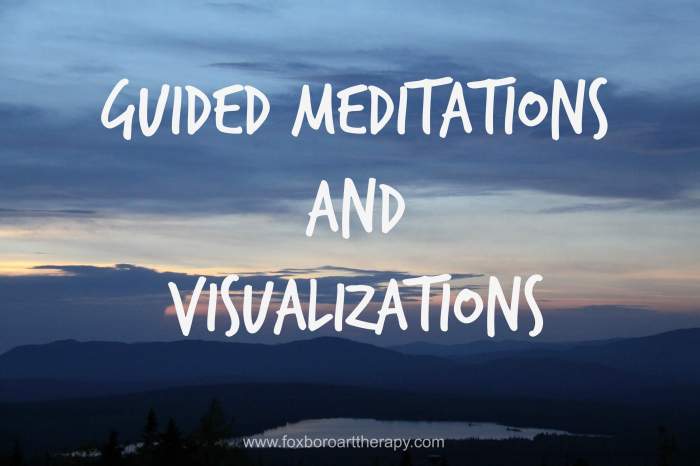
Performing a body scan visualization exercise involves focusing on each part of your body sequentially, bringing awareness to sensations and promoting relaxation.
Focusing on Different Body Parts
- Start by bringing your attention to your toes, noticing any tension or sensations present. Visualize releasing any tightness or discomfort.
- Move your focus slowly up your feet, ankles, calves, and thighs, relaxing each muscle group as you go.
- Continue scanning through your abdomen, chest, back, shoulders, arms, and hands, releasing any stress or tension you may find.
- Finally, bring your attention to your neck, jaw, face, and head, allowing any remaining tension to dissolve as you breathe deeply.
Importance of Mindfulness and Awareness, 4 Visualization Exercises for Guided Meditation
During a body scan visualization, it is crucial to practice mindfulness and awareness. This means observing your body without judgment, simply acknowledging any sensations or feelings that arise.
By cultivating this present-moment awareness, you can deepen your relaxation response, reduce stress, and promote overall well-being.
Nature Immersion Visualization Exercise
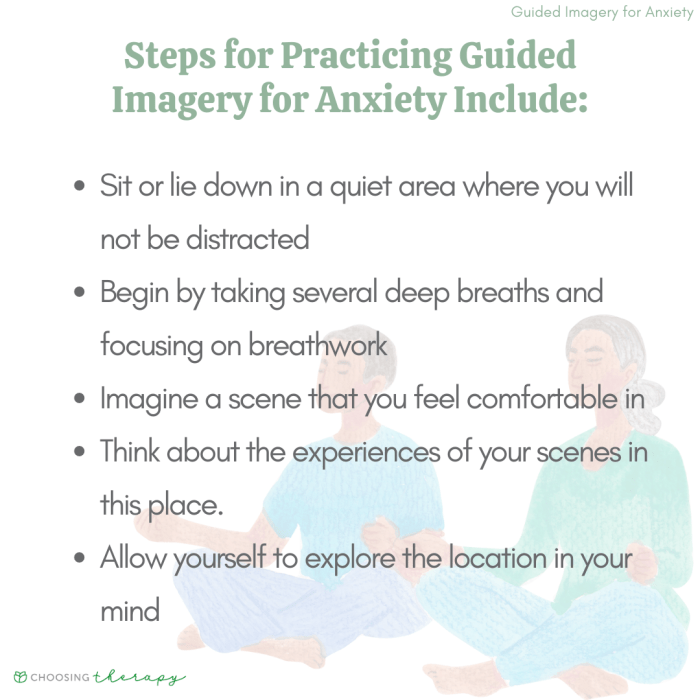
Nature immersion visualization is a technique that involves mentally transporting oneself to natural settings such as forests, beaches, or mountains during meditation. This practice aims to evoke feelings of calmness, relaxation, and inner peace by immersing the mind in the beauty and serenity of nature.
Concept of Nature Immersion Visualization
Visualizing natural settings like forests, beaches, or mountains during meditation involves vividly imagining the sights, sounds, and sensations associated with these environments. Close your eyes and picture yourself surrounded by lush greenery in a forest, feeling the warmth of the sun on a sandy beach, or breathing in the crisp mountain air. Engage all your senses to create a vivid mental image that transports you to these serene landscapes.
- Imagine the rustling of leaves in the wind, the gentle lapping of waves on the shore, or the distant sound of birds chirping in the mountains.
- Feel the soft earth beneath your feet, the cool ocean breeze on your skin, or the refreshing mountain breeze against your face.
- Visualize the vibrant colors of the foliage, the endless expanse of the ocean, or the majestic peaks of the mountains stretching towards the sky.
Engaging in nature immersion visualization can help reduce anxiety, lower stress levels, and promote a sense of inner peace and well-being.
Impact of Nature Imagery
Nature imagery has been shown to have a profound impact on mental health, with studies indicating that exposure to natural environments can improve mood, reduce cortisol levels, and enhance cognitive function. By incorporating nature immersion visualization into your meditation practice, you can harness the restorative power of nature to cultivate a sense of tranquility and mindfulness in your daily life.
Color Visualization Exercise: 4 Visualization Exercises For Guided Meditation
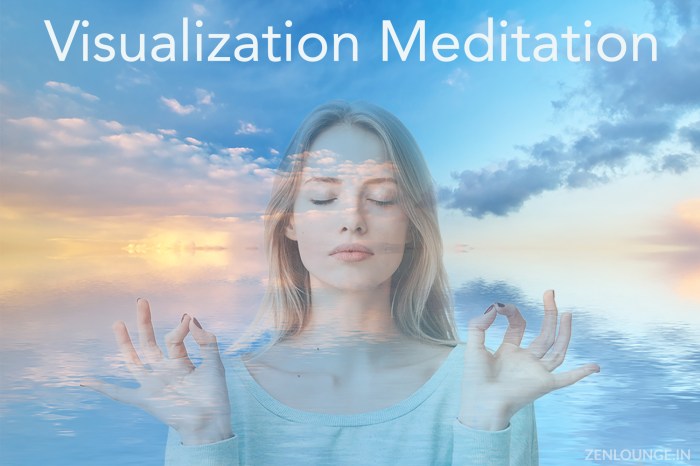
Visualizing colors in guided meditation can be a powerful tool for relaxation and mental clarity. By immersing yourself in specific colors, you can influence your emotions and energy levels, leading to a sense of balance and well-being.
Significance of Different Colors
- Blue: Often associated with calmness and tranquility, visualizing blue can help reduce stress and promote relaxation.
- Green: Symbolizing growth and renewal, green can bring a sense of harmony and balance to the mind and body.
- Yellow: Representing energy and positivity, yellow can uplift the spirit and boost mood.
- Red: Known for its association with passion and vitality, visualizing red can increase energy levels and motivation.
- Purple: Linked to spirituality and creativity, purple can inspire introspection and inner peace.
- Orange: Reflecting warmth and enthusiasm, orange can evoke feelings of joy and creativity.
Guidance on Visualization
To practice color visualization, find a quiet space where you can relax. Close your eyes and take deep breaths to center yourself. Choose a color that resonates with your current emotional state or desired outcome. Imagine this color surrounding you, filling you with its energy and properties. Focus on the sensations and emotions that arise as you immerse yourself in this color, allowing it to bring you a sense of peace and clarity.
Epilogue
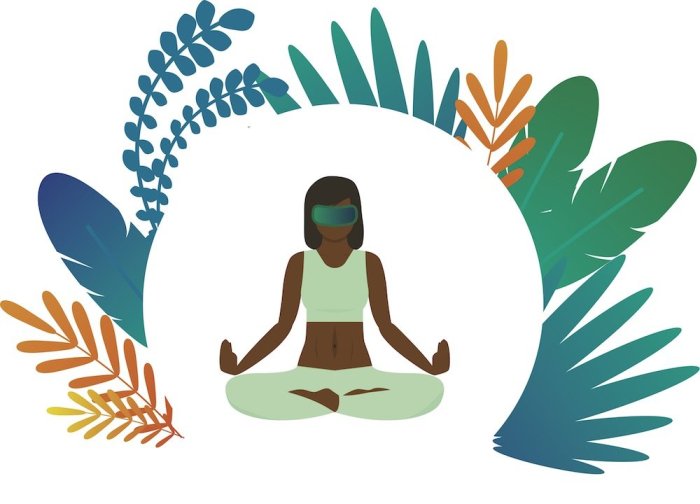
Embark on a journey of self-discovery and tranquility with these visualization exercises. By incorporating these techniques into your meditation practice, you can cultivate a sense of calm, reduce stress, and enhance your overall well-being.